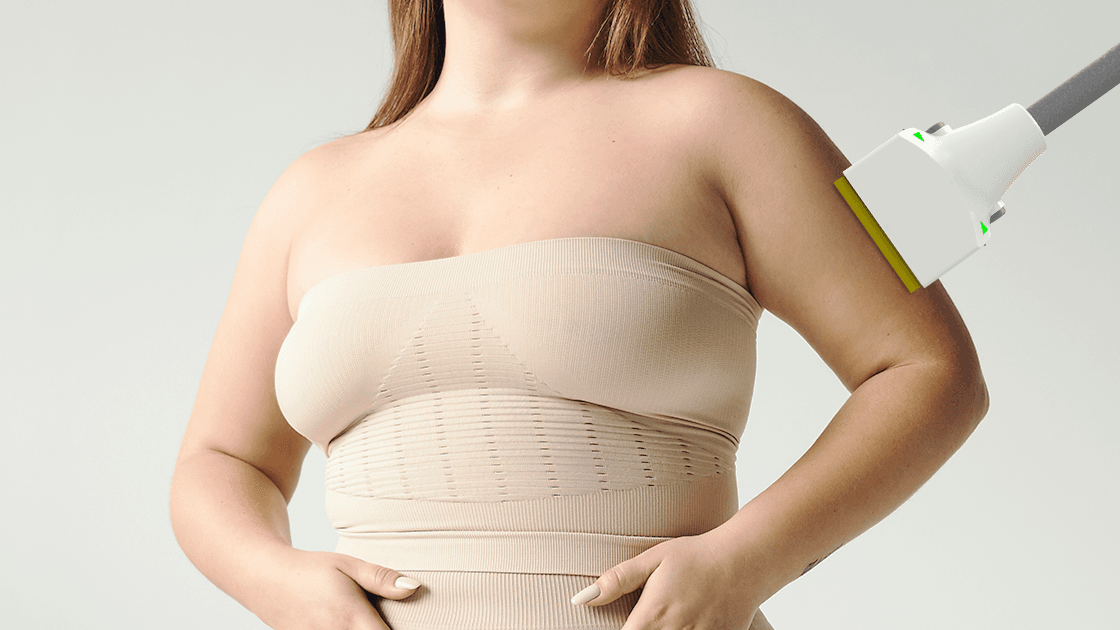1. Introduction
A double chin, also known as submental fat, can be a frustrating concern for many people striving for a defined and youthful facial profile. Even with regular diet and exercise, stubborn fat beneath the chin often lingers. Fortunately, advancements in non-invasive cosmetic procedures now offer safe and effective solutions. One such treatment, laser lipolysis, has emerged as a popular choice for targeting and reducing fat in this area without surgery. This blog explores how laser lipolysis works, its benefits, ideal candidates, treatment expectations, and comparisons with alternative options. Whether you’re seeking a sleeker jawline or simply curious about non-surgical fat removal methods, read on to discover how laser lipolysis can redefine your double chin and boost your confidence.
2. Understanding Laser Lipolysis
2.1 What Is Laser Lipolysis?
Laser lipolysis is a minimally invasive aesthetic procedure that uses laser energy to break down fat cells. Unlike traditional liposuction, which physically removes fat through suction, laser lipolysis works by liquefying fat cells, allowing the body to naturally metabolize and eliminate them over time. This treatment is particularly suitable for small and localized fat deposits, making it ideal for areas like the double chin. The laser typically emits a wavelength, often around 1060 nm, that penetrates the skin and targets adipose tissue without harming surrounding structures. The result is not only fat reduction but also collagen stimulation, leading to skin tightening. Laser lipolysis offers a dual benefit: it reduces volume and improves contour, creating a more youthful and defined appearance.
2.2 How Laser Lipolysis Targets and Breaks Down Submental Fat
When applied to the double chin area, the laser energy selectively heats subcutaneous fat cells to a temperature that disrupts their integrity. These damaged fat cells are then gradually processed by the body’s lymphatic system and naturally eliminated. This process can take several weeks, during which visible improvement becomes noticeable. The treatment is precisely calibrated to avoid overheating the skin or affecting deeper tissues, ensuring safety and comfort. Additionally, the thermal energy stimulates the production of collagen and elastin in the skin, which helps tighten the skin and further enhances the contour of the chin and jawline. For individuals with moderate fat accumulation under the chin and mild skin laxity, laser lipolysis offers a powerful, non-surgical alternative to traditional fat-reduction methods.
3. Benefits of Laser Lipolysis for Double Chin Reduction
3.1 Targeted Fat Melting for the Chin Area
One of the key advantages of laser lipolysis is its ability to precisely target fat under the chin without affecting surrounding tissues. The laser’s wavelength is optimized for adipose tissue absorption, allowing it to effectively disrupt fat cells in this specific region. This targeted approach is ideal for people who are close to their ideal body weight but struggle with localized pockets of fat. Unlike broader fat-loss strategies, laser lipolysis offers localized contouring that specifically addresses the double chin. Patients can expect to see measurable reduction in submental fat, typically within 6 to 12 weeks post-treatment. This precise fat targeting ensures more predictable and aesthetically pleasing results compared to more generalized fat-reduction methods.
3.2 Natural-Looking Chin Tightening
In addition to removing unwanted fat, laser lipolysis also promotes collagen production, leading to tighter and firmer skin. This is particularly beneficial in the double chin area, where fat loss alone can sometimes result in sagging. The controlled heat generated by the laser stimulates fibroblast activity in the dermis, triggering the body’s natural healing response and encouraging new collagen formation. Over time, this helps the skin retract and conform to the newly contoured chin and jawline. The result is a more youthful appearance without the need for surgical skin tightening. For individuals experiencing mild to moderate skin laxity, laser lipolysis provides a dual-action solution that enhances both fat reduction and skin quality.
3.3 Quick Recovery, Long-Lasting Results
Unlike traditional liposuction, which often involves significant recovery time, laser lipolysis is minimally invasive and typically requires little to no downtime. Most patients can resume normal activities within a day or two following treatment. The procedure is performed under local anesthesia or no anesthesia at all, depending on the device and provider’s protocol. Side effects are generally mild and may include temporary redness, swelling, or sensitivity in the treated area. Because the fat cells are permanently destroyed, results can be long-lasting with proper diet and exercise. This makes laser lipolysis an attractive option for busy individuals seeking effective yet low-maintenance aesthetic improvements.
3.4 Sculpted Jawline and Improved Profile
A well-defined jawline is often associated with youth, confidence, and vitality. By removing excess fat beneath the chin, laser lipolysis helps enhance facial contours and restore balance to the lower face. Many patients report increased confidence in their appearance after the treatment. The improved definition can also enhance facial harmony and provide better profile aesthetics, making it a favorite among those who feel self-conscious about their double chin in photos or video calls. The subtle yet noticeable changes often look natural, avoiding the “overdone” appearance sometimes associated with more invasive cosmetic procedures. This sculpting effect is especially appealing to patients who want a refined, polished look without undergoing surgery.
4. Who Should Consider Double Chin Laser Lipolysis?
4.1 Ideal Candidates for Treatment
Laser lipolysis for double chin reduction is best suited for people who:
- Have mild to moderate submental fat (fat under the chin)
- Maintain a stable weight and overall good health
- Possess good skin elasticity to allow for natural retraction and contouring
- Want to avoid surgery, general anesthesia, or extended recovery
- Are frustrated by a double chin resistant to diet or exercise
- Have realistic expectations, understanding that this is a contouring treatment, not a facial transformation
- Are willing to maintain healthy lifestyle habits post-procedure for optimal results

4.2 Who May Need an Alternative Approach
Laser lipolysis may not be suitable for everyone. You might need to consider other options if you:
- Have severe skin laxity or large fat deposits
- Expect dramatic facial reshaping beyond subtle contouring
- Are pregnant or breastfeeding
- Have uncontrolled medical conditions, such as diabetes or autoimmune diseases
- Recently had facial surgery or implants in the treatment area
- Are prone to delayed healing or infections
4.3 Why a Professional Consultation Matters
Consultation with a licensed, experienced practitioner is critical for achieving safe and satisfying outcomes. During your initial assessment, the practitioner will evaluate your submental fat volume, skin condition, and overall health. They may use diagnostic tools like calipers, photos, or 3D imaging to document your baseline and design a personalized treatment plan. A good consultation also involves reviewing your medical history, medications, and lifestyle habits to rule out contraindications. Importantly, your provider should set realistic expectations and explain the procedure in detail, including risks, results timeline, and any recommended complementary treatments. This step ensures informed consent and helps you feel confident about the procedure and provider—both key factors in meeting the standards of safety, efficacy, and trustworthiness.
5. What to Expect During Laser Lipolysis for Double Chin
5.1 How to Prepare for Your Laser Double Chin Treatment
Preparation is simple but essential. Before your appointment, follow these steps ensures a safer procedure and improves post-treatment recovery:
- Avoid anti-inflammatory drugs, blood thinners, and alcohol 48 hours prior
- Stop smoking several days before treatment to support healing
- Avoid sun exposure and harsh skin treatments for at least a week
- Cleanse your skin on the day of treatment and avoid makeup or lotions on the chin/neck
- Communicate medical history and medications clearly to your provider
5.2 Step-by-Step Overview of the Session
A typical laser lipolysis session for the chin involves:
- Cleansing the submental area to prep the skin
- Applying a local anesthetic for patient comfort
- Using either a small laser handpiece or cannula, depending on the device
- Delivering controlled thermal energy to liquefy fat and stimulate collagen
- Completing the session in approximately 30 to 60 minutes
- Applying a compression garment or band afterward to reduce swelling
5.3 Aftercare and Recovery Tips
For smooth recovery and best results, follow these aftercare guidelines:
- Expect minor swelling or bruising, which should subside in a few days
- Use cold compresses and keep your head elevated to reduce inflammation
- Wear a chin strap or compression band for a few days if recommended
- Avoid exercise, hot showers, and facial massage for at least 48 hours
- Cleanse gently and follow skincare advice from your provider
- Stay hydrated and limit salty foods to support lymphatic drainage

6. Results and Maintenance of a Sculpted Chin
6.1 When to Expect Visible Improvements
Most individuals begin to see visible results within 4 to 6 weeks after undergoing laser lipolysis for their double chin. However, this timeline can vary depending on the patient’s metabolism, skin elasticity, and the severity of submental fat. As the body gradually metabolizes and eliminates the liquefied fat cells through the lymphatic system, the chin area appears slimmer and more defined. While initial improvements are noticeable, optimal results typically emerge by the 8 to 12-week mark. Patients should manage their expectations and understand that this treatment provides gradual, natural-looking changes. Photographic documentation before and after treatment can help visualize progress. Patience and consistency are key, and following aftercare guidelines significantly boosts the effectiveness and longevity of the results.
6.2 How Long the Effects Last
The effects of laser lipolysis on the double chin can be long-lasting, especially when combined with a stable weight and healthy lifestyle. Since the fat cells treated during the procedure are permanently destroyed and removed by the body, they do not regenerate. However, remaining fat cells can still expand with weight gain. For this reason, patients are encouraged to maintain their post-treatment shape through regular exercise and a balanced diet. On average, the contour improvements can last for several years. Skin tightening effects may continue to improve over time due to collagen stimulation. Maintenance treatments might not be necessary unless there are significant lifestyle changes or aging-related laxity. Annual check-ins with a provider can help track changes and determine if touch-ups are beneficial.
6.3 Will You Need Multiple Sessions?
Many patients achieve satisfying results with a single session of laser lipolysis for their double chin. However, those with a larger volume of submental fat or more pronounced skin laxity may benefit from multiple treatments. Providers typically recommend spacing follow-up sessions at least 6 to 8 weeks apart to allow the body sufficient time to metabolize fat and rebuild collagen. A personalized treatment plan developed during the initial consultation will determine the number of sessions needed. Multiple treatments can offer a more refined and consistent contour, particularly for patients seeking dramatic improvements. It’s also worth noting that spacing sessions strategically allows for gradual changes, which appear more natural and are easier to maintain long term.
7. Potential Side Effects and Safety
7.1 Mild Side Effects to Expect
Laser lipolysis is generally safe and well-tolerated, but like any cosmetic procedure, it can produce some mild side effects. Common post-treatment symptoms include temporary redness, swelling, or mild bruising around the chin area. These usually subside within a few hours to a couple of days. Some patients may experience a slight tingling or numbness, which is also temporary. Rarely, tenderness or firmness may occur due to the body’s inflammatory response. Most side effects resolve without intervention, and patients can typically resume normal activities shortly after treatment. To minimize discomfort, applying a cold compress and avoiding sun exposure are often recommended. Practitioners will provide customized aftercare instructions to ensure the safest and most comfortable recovery process.
7.2 Rare but Possible Complications
Although complications from laser lipolysis are rare, they can occur if the procedure is not performed by a qualified professional. Potential risks include infection, burns, or uneven fat removal. In very rare cases, nerve injury could cause prolonged numbness or altered sensation in the treated area. Thermal damage to the skin or underlying tissue may also result if improper settings are used. To reduce these risks, it’s critical to choose a licensed and experienced provider who uses FDA-cleared technology and adheres to safety protocols. Patients should also disclose their medical history and any underlying conditions that could increase their susceptibility to complications. Adhering to pre- and post-treatment care guidelines further minimizes the likelihood of adverse outcomes.
7.3 How to Stay Safe
Ensuring safety during and after a laser lipolysis treatment begins with selecting a reputable practitioner with expertise in non-invasive body contouring. Look for providers who conduct thorough assessments and explain realistic outcomes. A well-equipped clinical environment and FDA-cleared devices significantly reduce risk. During the consultation, patients should ask about credentials, device settings, and emergency protocols. Post-treatment, following aftercare recommendations such as staying hydrated, avoiding strenuous activity for a day or two, and refraining from applying heat to the area will help speed up healing and minimize complications. Regular follow-ups and prompt reporting of any unusual symptoms are essential to staying safe and achieving the best aesthetic results.
8. Comparing Laser Lipolysis to Other Double Chin Treatments
| Feature | Laser Lipolysis | Kybella Injections | CoolSculpting | Surgical Liposuction |
| Treatment Type | Laser-based fat melting | Injectable fat dissolver | Cryolipolysis (fat freezing) | Surgical fat removal |
| Invasiveness | Minimally invasive or non-invasive | Minimally invasive (needle injections) | Non-invasive | Invasive (surgical) |
| Skin Tightening | Yes (stimulates collagen) | No | Minimal | No |
| Number of Sessions | 1–3 | 2–6 | 1–3 (depends on fat volume) | 1 (usually sufficient) |
| Downtime | 1–3 days (mild swelling) | 3–7 days (swelling, bruising) | 0–2 days (mild numbness) | 1–2 weeks |
| Pain Level | Mild warmth, tolerable | Moderate (burning sensation post-injection) | Mild discomfort during suction | Moderate to severe post-op pain |
| Result Onset | 1–4 weeks | 4–6 weeks (gradual fat loss) | 4–6 weeks | Immediate contour, full results in weeks |
| Result Duration | Long-term (with stable weight) | Long-term (if fat cells destroyed) | Long-term | Long-term |
| Post-Treatment Sensitivity | Mild redness or numbness (short-lived) | Swelling, tenderness, firmness | Numbness or tingling (can last weeks) | Bruising, soreness, scarring |
| Best For | Moderate fat + mild skin laxity | Small, defined fat pockets | Mild to moderate fat | Larger fat volume |
8.1 Laser Lipolysis vs. Kybella Injections
Kybella is an injectable treatment that uses deoxycholic acid to break down fat under the chin. While both Kybella and laser lipolysis aim to reduce submental fat, they differ in several key areas. Laser lipolysis is non-invasive and often results in skin tightening due to its collagen-stimulating effects, whereas Kybella may lead to temporary swelling and doesn’t offer skin tightening. Multiple Kybella sessions—up to six—are typically needed, while laser lipolysis often achieves desired results in fewer treatments. Patients may also find laser lipolysis more comfortable due to the absence of needles. Ultimately, laser lipolysis may be a better option for those seeking fat reduction with skin tightening and minimal downtime.
8.2 Laser Lipolysis vs. CoolSculpting Under the Chin
CoolSculpting employs cryolipolysis, a process that freezes fat cells, while laser lipolysis uses thermal energy to destroy fat. Both treatments are non-invasive and FDA-cleared, but they offer different experiences and outcomes. Laser lipolysis can provide a more precise contour and is often favored for its dual action—fat reduction and skin tightening. CoolSculpting may require more sessions and may not offer the same degree of skin firming. Additionally, some patients report post-treatment numbness or sensitivity with CoolSculpting, which can last for weeks. Laser lipolysis typically has shorter recovery times and produces results sooner. Patients seeking enhanced skin texture in addition to fat loss may prefer laser technology over cryolipolysis.
8.3 Laser Lipolysis vs. Surgical Liposuction
Surgical liposuction is a more invasive approach to fat removal and involves anesthesia, incisions, and a longer recovery period. In contrast, laser lipolysis is minimally invasive or non-invasive, depending on the device, and requires little to no downtime. While liposuction may remove larger volumes of fat in a single session, it lacks the skin-tightening benefits provided by laser-based treatments. Additionally, laser lipolysis involves fewer risks and is suitable for patients seeking subtle yet effective changes with minimal disruption to their daily lives. For those with moderate fat deposits and skin laxity under the chin, laser lipolysis presents a safer and more convenient alternative to surgical intervention.
9. Conclusion
Laser lipolysis represents a cutting-edge solution for reducing double chin fat and redefining the jawline with minimal downtime. Its unique combination of targeted fat melting and collagen stimulation offers a natural, long-lasting enhancement to facial contours. By opting for this safe, effective, and scientifically-backed procedure, individuals can enjoy a more sculpted profile and renewed self-confidence without undergoing surgery. Whether you’re just beginning your journey or have tried other methods with limited success, laser lipolysis may offer the transformation you’ve been looking for.
10. FAQs About Laser Double Chin Removal
Most patients report minimal discomfort during the procedure. A local anesthetic is typically applied beforehand to numb the area. You may feel warmth or a slight tingling sensation, but the treatment is generally well-tolerated.
Some patients see noticeable improvement after one session, but most benefit from two to three treatments spaced a few weeks apart for optimal contouring and skin tightening.
Initial results can appear within two to four weeks, but full outcomes often take 8 to 12 weeks as the body gradually eliminates liquefied fat and collagen remodeling takes place.
Yes, the destroyed fat cells are permanently removed. However, future weight gain can lead to the enlargement of remaining fat cells. A balanced diet and regular exercise are key to maintaining results.
Yes, the heat generated by the laser stimulates collagen production, which leads to gradual skin tightening along the jawline and under the chin—an advantage over traditional fat reduction techniques.
Laser lipolysis is generally safe for most skin types and tones. However, a professional consultation is necessary to ensure the chosen device settings are suitable for your individual skin characteristics.
11. References
- Slimming Precision: Introducing SculpLase 1064nm Lipolysis
- PowerSculp 1064nm Laser Lipolysis System
- Slim Down with SculpLase: Laser Lipolysis at Its Finest
- SculpLase: Precision Fat Reduction for a Confident You
- The Efficacy of Noninvasive 1060-Nm Diode Lasers for Submental Lipolysis: A Pilot Study
Laser Lipolysis Results: What Happens to Fat?








